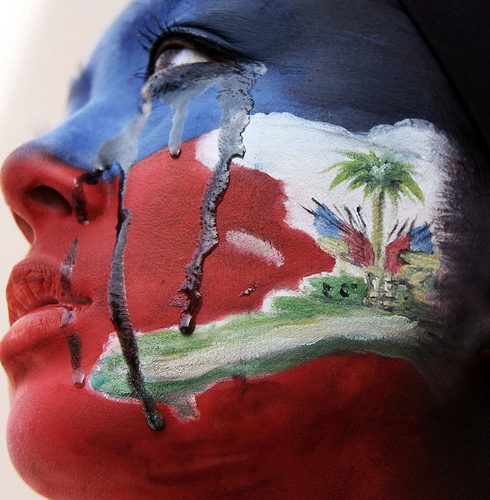Are We There Yet?
 Two years after the earthquake, I find myself asking are we there yet? We knew recovery would be difficult. The earthquake was one of the worst natural disasters the western hemisphere has ever experienced and arguably the worst urban disaster ever. Haiti’s institutions were/are weak. For decades, NGOs have been providing the services that a strong, capable, and accountable government should. One indication of recovery is the extent to which Haiti’s half million internally displaced persons (IDPs) are able to access new homes and livelihoods.
Two years after the earthquake, I find myself asking are we there yet? We knew recovery would be difficult. The earthquake was one of the worst natural disasters the western hemisphere has ever experienced and arguably the worst urban disaster ever. Haiti’s institutions were/are weak. For decades, NGOs have been providing the services that a strong, capable, and accountable government should. One indication of recovery is the extent to which Haiti’s half million internally displaced persons (IDPs) are able to access new homes and livelihoods.
Haiti received millions upon millions of dollars after the earthquake – or to be more accurate, the NGOs and international organizations that either were or became active in Haiti received millions upon millions of dollars. These funds went for water, sanitation, tents, food, and other basic needs. However, transition can only begin when Haiti’s government is able to shoulder some of the burden that the NGOs have been carrying. Without plans, what are we working torward? Money can support but cannot buy the solutions. Policies on eminent domain, land tenure, and decentralization are needed to get the country back on the path to development. As far as IDPs go, forced evictions are not uncommon as private landowners want their properties back. The Haitian government should be doing more to help the displaced - not so much providing charity as opportunities to work and become self-reliant.
There has been some progress. Rubble has been cleared. Infrastructure is being developed. Investors remain interested. The Inter-American Development Bank (IDB) ended 2011 with the Investment Forum in held in Port au Prince in collaboration with the Haitian government and Clinton Foundation. The forum attracted more than 1,000 business people who came together to consider investment in Haiti. It has been confirmed that a Korean apparel manufacture Sae-A plan on investing $78 million to build an industrial park in the northern region of Haiti, employing 200,000 local Haitians. The Spanish government announced they will help Haiti improve water utilities in Port au Prince had have identified foreign experts to assist. The French Development Agency (AFD), the Columbian Coffee Grower Federation and Nestlé have plans to improve Haiti’s production of coffee. An hour outside of Port au Prince, Partners in Health is building what will be Haiti’s largest and best public hospital. Yet at the same time, National Palace, a symbol of sovereignty, still stands with no work having been done to restore it, or at a minimum, to remove what is left of it. At least the Neg Maron still stands.
A government must set priorities, make hard decisions, and see them through. One pressing but very challenging issues concerns how to rehabilitate the environment in a low resource country where the vast majority of people cook with wood based charcoals. Haiti’s Prime Minister Garry Conille intends to increase governmental leadership on the environment. Only 1.5% of Haiti’s vegetation is currently in existence and the target is to increase reforestation by 3.5% within the next five years though the Green Border Project. It includes watershed management, reforestation, renewable energy and irrigation in the South East and North East regions of Haiti.
For Haitians and Friends of Haiti, the fact is that the pace of recovery can’t be fast enough. We all hoped for more over the past two years. But change has been slow. We still need international assistance and will for years to come. More than this though, we need the strong, transparent and effective government that the Haitian people deserve. We also need the government and civil society to fight for human rights – not for some – but for all. We need more solidarity and less charity. More capacity building and less hand outs. Haitians know what they want if you ask them – yet one can't help but have the impression that there are organizations that would prefer to speak for Haitians than have a dialogue with them. I cannot wait for the day that when I see images of Haiti that will showcase what is right and beautiful about the country – not just the suffering - images that show Haitians as active and engaged, not helpless individuals whose sole purpose in life is to be saved by foreigners – be they aid workers or missionaries. I want to see school children going on to become the leaders that Haiti needs. We can't import leadership. Still, I have nothing but hope which has been passed down from my grandparents, to my father and mother, and down through me. No, we are not there yet –but one day we will be.
Jasmine
"Piti, piti waszo fe nich li"
Little by little a bird makes its nest
Add new comment